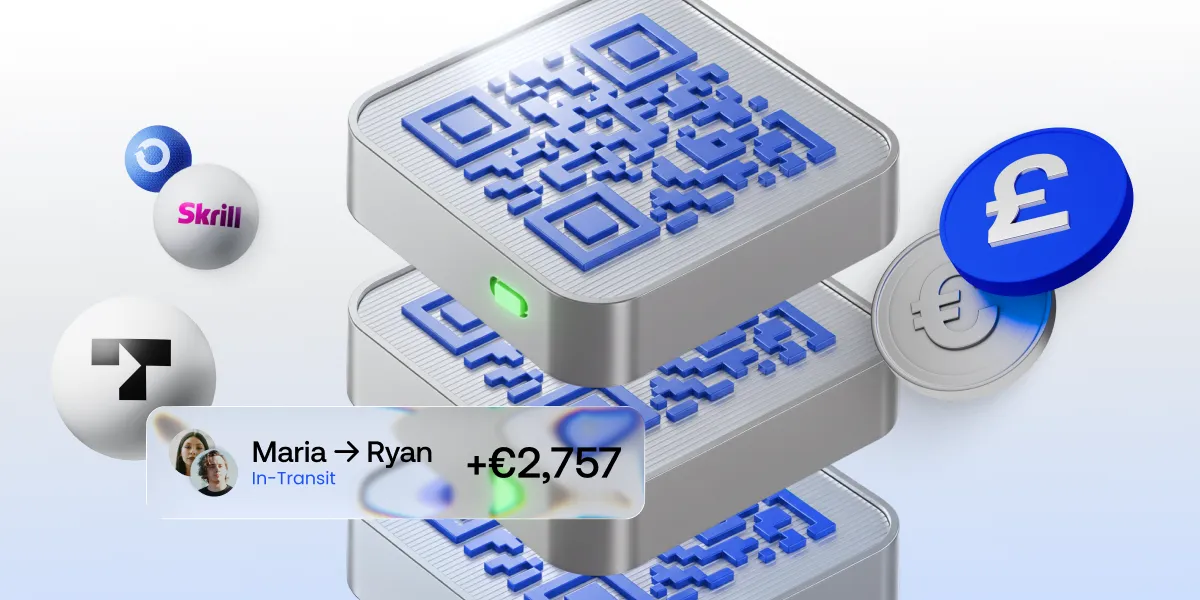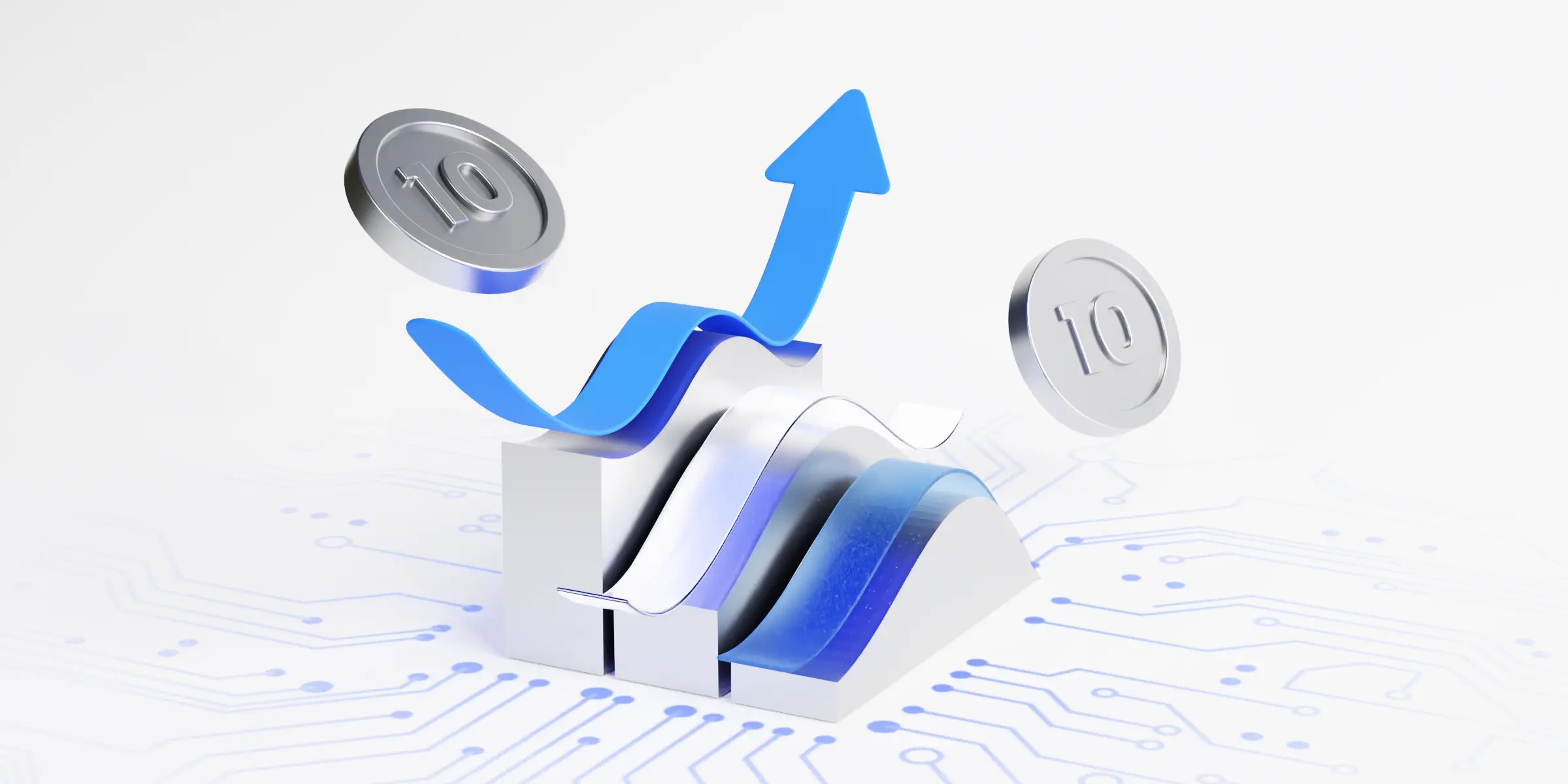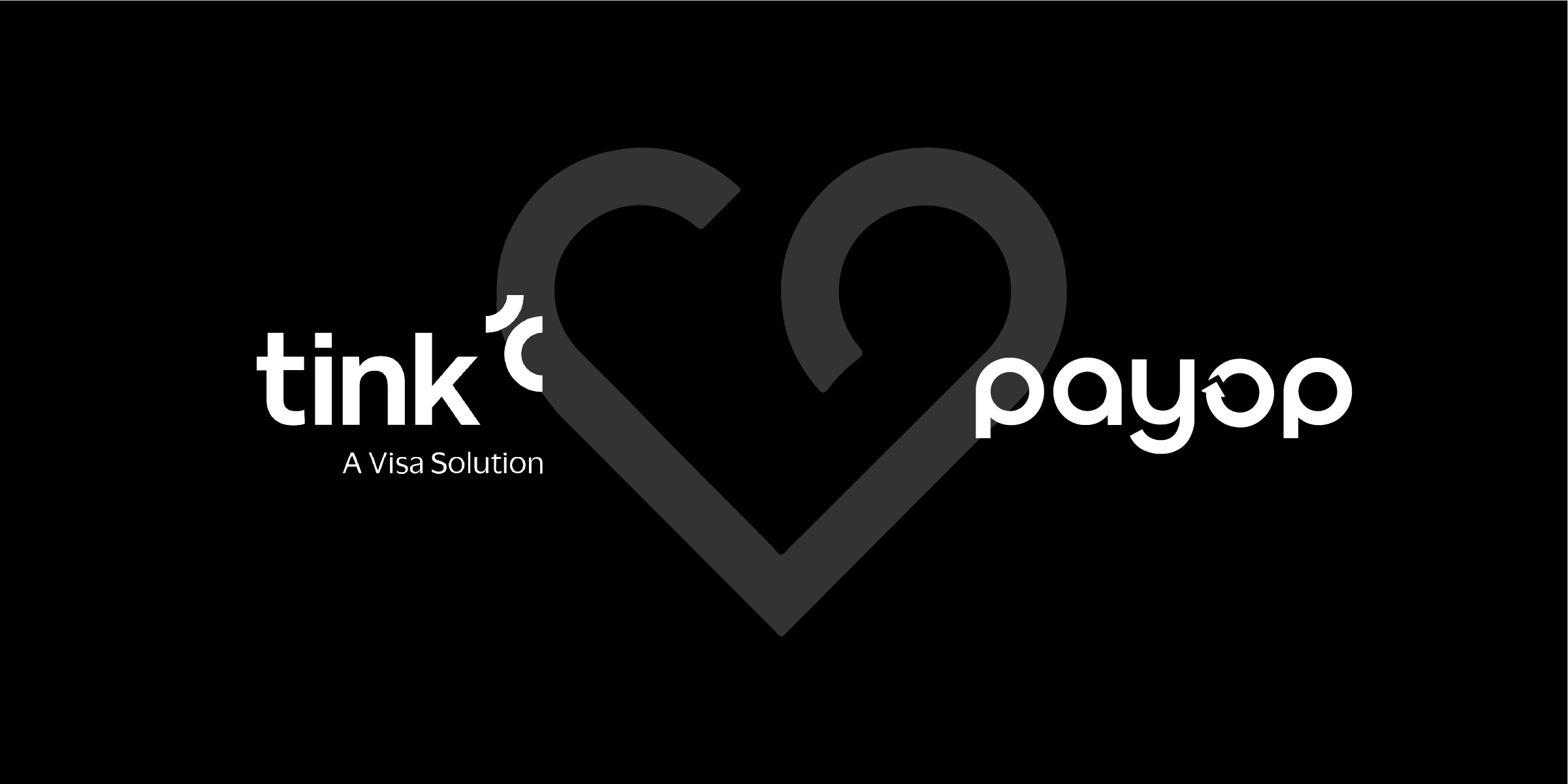A guide to payment processing: what it is and how it works?

In today’s digital age, the convenience of online shopping and contactless payments has become the norm. But have you ever wondered what happens behind the scenes when you swipe your card or click “pay now”? The seemingly effortless payment processing involves a complex choreography of several key players. Understanding this intricate dance can empower businesses and consumers alike.
What is payment processing?
Before we delve into the intricate workings of payment processing, let’s establish a clear understanding of the term itself. Payment processing refers to the entire behind-the-scenes operation that facilitates the secure funds transfer between a customer and a merchant. This encompasses a series of steps that verify the transaction details, ensure sufficient funds, and ultimately move the money from the buyer’s bank account to the seller’s.
The payment processing system acts as the invisible backbone of the digital economy, ensuring seamless and secure transactions for both businesses and consumers.
Key players in payment processing
The first step to untangling the complexities of payment processing is to meet the essential players involved. This diverse group includes the customer making the purchase, the merchant receiving the payment, and the financial institutions facilitating the funds transfer.
- Customer: The individual initiating the payment, typically using a debit or credit card.
- Merchant: The business accepting the payment for goods or services.
- Issuing bank: The financial institution that provides the customer with their debit or credit card, holds the funds, confirms their availability to make the payment, and either approves or rejects it.
- Acquiring bank (Merchant Bank): The financial institution that holds the merchant’s account, receives information from the payment processor and partners with the merchant to process their customer payments.
- Payment gateway: The secure online portal that facilitates communication between the merchant and the acquiring bank.
- Payment processor: The behind-the-scenes player that controls the transaction process on behalf of the acquiring bank, verifies the transaction details, ensures sufficient funds, and transfers money between the banks.
- Card network (e.g., Visa, Mastercard): The global network that governs the rules and regulations for card transactions, acting as a middleman between issuing and acquiring banks.
- Point-of-Sale (POS) system: A POS system is the cash register of today’s world. It’s the electronic system where a customer’s payment information is captured and sent for processing. In online stores, the POS system is built into the website or app where you enter your payment details.
How does payment processing work?
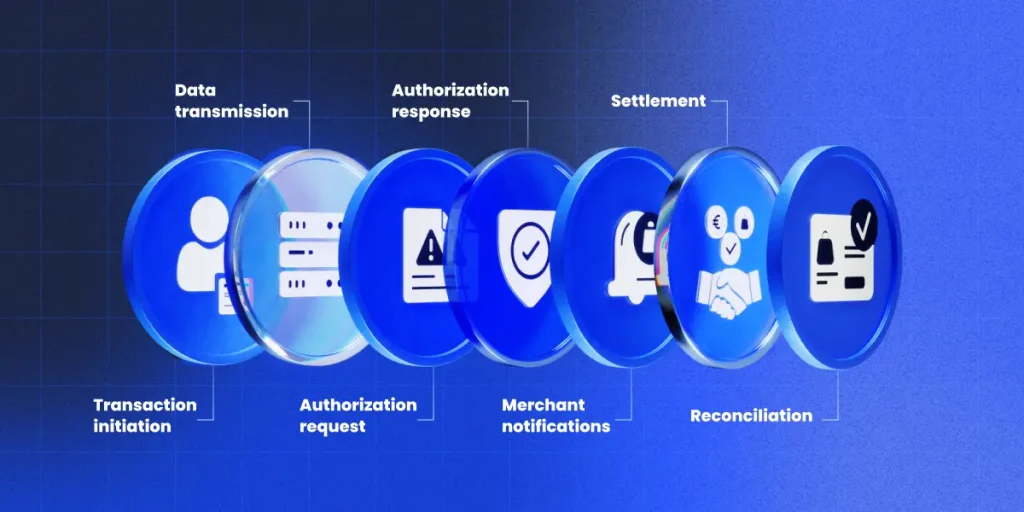
The payment processing flow is a multi-step process typically initiated by the customer making a payment using a debit or credit card, digital wallet or other payment method. Here’s a breakdown of the flow:
- Transaction initiation: The customer makes a purchase on the merchant’s website, chooses a payment method, and initiates the payment.
- Data transmission: The payment gateway captures and encrypts the payment details, sending them to the payment processor.
- Authorisation request: The payment processor forwards the transaction details to the card network, which then sends it to the issuing bank for authorisation.
- Authorisation response: The issuing bank approves or declines the transaction based on the customer’s available funds and sends this response back through the card network to the processor.
- Merchant notification: The processor forwards the authorisation status to the payment gateway, which then notifies the merchant.
- Settlement: Upon successful authorisation, funds are transferred from the issuing bank to the merchant’s account.
- Reconciliation: The merchant and their financial institution reconcile the completed transactions with their records.
Benefits of a smooth payment processing system
A smooth and efficient payment processing system provides substantial benefits to all stakeholders involved, including customers, merchants, and financial institutions:
- Convenience: Enables efficient and secure transactions for both customers and merchants.
- Security: Protects sensitive financial data through encryption and fraud prevention measures.
- Efficiency: Optimises the payment process, reducing processing times and manual intervention.
- Growth: Facilitates the conversion growth and business expansion to new markets.
- Data & Insights: Provides valuable data on customer behaviour and spending patterns, enabling businesses to make informed decisions.
How do you choose the right payment partner?
Selecting the right payment processing partner is crucial for maximising your business’s efficiency and growth. Here are some key factors to consider:
- Supported payment methods: Choose a processor that supports various payment methods and currencies, especially if you plan to expand internationally.
- Security measures: Opt for a processor that adheres to high-security standards, such as PCI DSS compliance, and offers advanced security features, such as encryption and fraud detection.
- Transaction fees: Understand all potential costs, including transaction, monthly, and setup fees. Choose a processor with a clear, straightforward pricing structure.
- Customer support: Look for a provider with responsive and reliable customer support in case of any issues.
- Integration capabilities: The system should integrate smoothly with your existing business platforms, reducing implementation time and costs.
Evaluating these factors will help you choose a payment processing partner that not only fits your current needs but also supports your business’s long-term growth and customer satisfaction.
How can Payop help you scale your business?
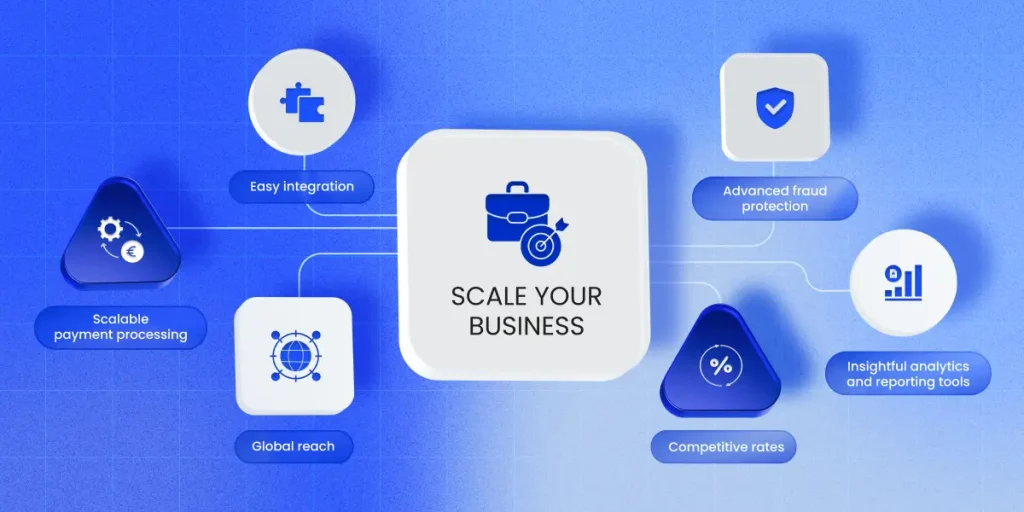
The Payop platform is tailored to help businesses scale efficiently and effectively, removing the typical barriers associated with financial operations and global commerce. Whether you want to expand your geographical reach, optimise payment operations, or enhance customer transaction experiences, Payop delivers with its advanced technology, security, and customer-centric features.
Here’s how Payop can empower you to scale your business:
- Easy integration: Payop offers several options of simple and unified integration, allowing different industries to minimise setup time and ensure a smooth onboarding experience.
- Scalable payment processing: Payop can smoothly handle increasing volumes of transactions, ensuring that your payment infrastructure supports your growth every step of the way.
- Global reach: If you envision international expansion, Payop can support over 500 international payment methods and 100 currencies, opening doors to new markets.
- Competitive rates: Payop charges you only for successful transactions, with no setup or monthly fees. We strive to provide transparent pricing structures and help you maximise your profits.
- Insightful analytics and reporting tools: Understanding customer behaviour and transaction patterns is crucial for any growing business. Payop provides detailed analytics and reporting tools that help companies to track and analyse their financial data.
- Advanced fraud protection: Payop uses state-of-the-art security protocols, including PCI DSS compliance, encryption and tokenization, to ensure secure transactions.
To get more insights and individual consultations, contact our team at sales@Payop.com.

